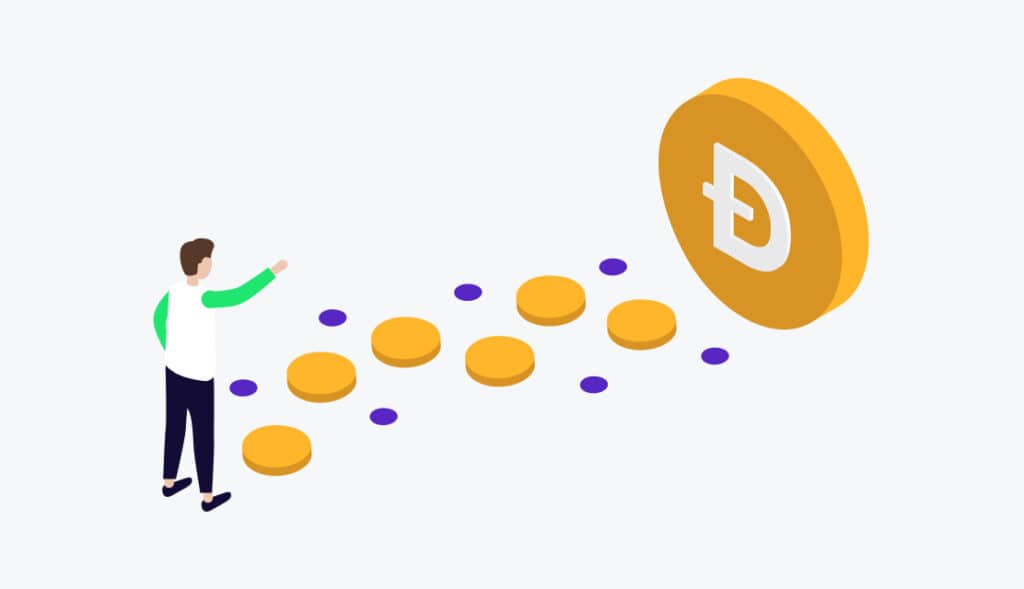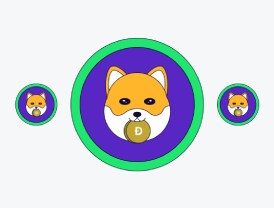What Is Dogecoin?
Though Dogecoin (DOGE) has reached mythical status over the last few years, becoming one of the more popular cryptocurrencies, not as many people know its origin story. The creation of the currency lies at the intersection of crypto and memes.
Intended to be a parody of the altcoins that were flooding the crypto market in 2013, Billy Markus and Jackson Palmer created the payment system as a joke to make fun of Bitcoin and the wild speculation in the cryptocurrency market. At the time, with only 100 currencies in the crypto market, Markus and Palmer figured that with a little marketing, Dogecoin might be able to reach a broader audience than Bitcoin.
As Palmer would later recall, the idea to create Dogecoin came to him while he had two tabs open side-by-side on his computer. On one screen was CoinMarketCap (an aggregator of data on cryptocurrencies) and on the other screen was a news article about the best meme of 2013, Doge — a Japanese, Shiba Inu dog. When switching between the tabs, Palmer had the idea to put the two elements together and quickly tweeted about a hot new cryptocurrency called Dogecoin, buying the website domain shortly after.
Shortly afterwards, Billy Markus reached out to Palmer on Twitter asking him if he would be willing to create an actual Dogecoin cryptocurrency and it was officially launched on 6 December 2013 with the tagline, “Dogecoin is the parody cryptocurrency favored by Shiba Inus worldwide.” Within the first month of its launch, dogecoin.com had over a million visitors.
Two weeks after its launch, the coin leaped 300% in just a three-day span, in what would be the first of many huge jumps in the coin’s value due to grassroot marketing campaigns. On 25 December 2013, multiple Dogecoin wallets were hacked but the Dogecoin community came together and refunded affected users.
This was just one of the many large-scale initiatives by the Dogecoin community that have helped it become one of the most popular and most trusted coins in the crypto universe. And as much as anything, it’s this community that has contributed so much to Dogecoin’s story, which we will try to share.
Though this guide is meant to be broad, full-reaching education and understanding of Dogecoin and its capabilities, it is not meant to be all-encompassing. We want this guide to be your launching pad into the Dogecoin ecosystem, providing you with a starting block, enabling you to know what questions to ask to further your education.

What is Dogecoin?
So what is Dogecoin (DOGE)? It’s a digital currency that acts as an open-source, peer-to-peer payment system. Dogecoin solely functions as a currency and payment network, being used to make payments and purchases. In its early days, Doge was primarily used for tipping users on Reddit and Twitter, but it is also now accepted as a method of payment by a few dozen merchants.
What it isn’t, is an effective store-of-value currency. This is mainly due to the infinite number of Dogecoins that can be created, making the currency highly inflationary by design — this was part of the “joke” of Doge, that there is an unlimited supply.
It is relatively faster and easier for DOGE miners to complete mathematical equations and record transactions than bitcoin and other currency miners. This makes Dogecoin more efficient for processing payments. It takes an average of one minute to process and ratify new blocks on the Dogecoin blockchain compared to an average of 10 minutes for Bitcoin. Dogecoin is designed to be unattractive to investors by keeping a permanently low value due to its mining algorithm.
Whereas most other altcoins retain a competitive edge over their predecessor (Bitcoin), Dogecoin doesn’t contain such advantages. Unlike most altcoins that typically only gain traction alongside these specifically advantageous use cases, Doge’s momentum and value is primarily driven by an inside joke on the internet — making it a unique cryptocurrency.
How does Dogecoin work?
Dogecoin’s protocol is based on a version of Luckycoin — now a defunct blockchain — which itself is a ‘fork’ of Litecoin, who’s code was sourced from Bitcoin. A fork happens when a blockchain diverges into two potential paths and can lead to a complete change in protocol and eventually a completely new cryptocurrency. For example, in 2017, Bitcoin Cash was created after a hard fork of the Bitcoin blockchain.
The Dogecoin blockchain can process around 30 transactions per second, which is much higher than Bitcoin. It uses a proof-of-work consensus algorithm called Auxiliary Proof-of-Work, which allows those who mine other proof of work cryptocurrencies (primarily Litecoin) to simultaneously mine DOGE at no additional cost. This process is known as merged mining.
Dogecoin’s initial block rewards were designed to be random and vary between zero and one million DOGE and this continued until it reached a supply of 100 billion, which occurred in February 2018. Since then, each mined block yields a reward of 10,000 DOGE.
One block is mined every minute and Dogecoin has no supply cap. Palmer has stated that this was a mistake, and that the supply cap should have been set at 100 billion. It was left ‘unfixed’ on purpose as it keeps the cost of DOGE low.
The rise of the Dogecoin community
The story of Dogecoin’s sustained foothold in the crypto ecosystem isn’t a story about meme’s, dogs, or even satirical cryptocurrencies, though all of these aspects have played at least some contribution to its origin and its rise. Rather, the story of Dogecoin’s continued relevance has been about viral marketing and the power of culture.
Through the support of a large online community, which includes several big celebrities and business tycoons, such as Elon Musk, Mark Cuban, and Snoop Dogg, Dogecoin has risen to become one of the more popular cryptocurrencies.
The online Dogecoin community has also been influential in newsworthy headlines, which includes various fundraising events, such as a fundraiser to send the Jamaican Bobsled Team to the 2014 Winter Olympics after the team qualified but could not afford to attend. They also raised money to sponsor NASCAR Sprint Cup Series driver, Josh Wise, in 2014 with about $55,000.
Musk, in particular, has been a big component for Dogecoin and a big boon to the online community and to DOGE’s price. Due in large part to his status as a public figure and his stature as a business tycoon, Musk has helped create press for the currency and help move the needle on its price with positive comments on social media.
Dogecoin also gained in popularity in 2021 when a combination of different trading communities on social media and celebrities helped push the price of the coin to new highs in just a few months. At the beginning of 2021, DOGE had a market cap hovering around $1 billion and was trading at around $.01USD. By the first week of May, DOGE was worth roughly $0.68USD and its market cap was nearly $90 billion.




